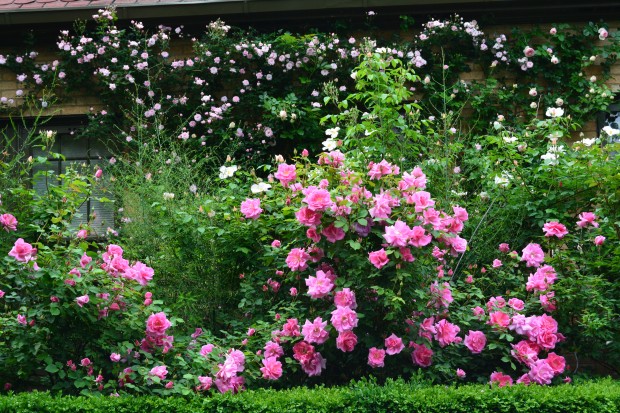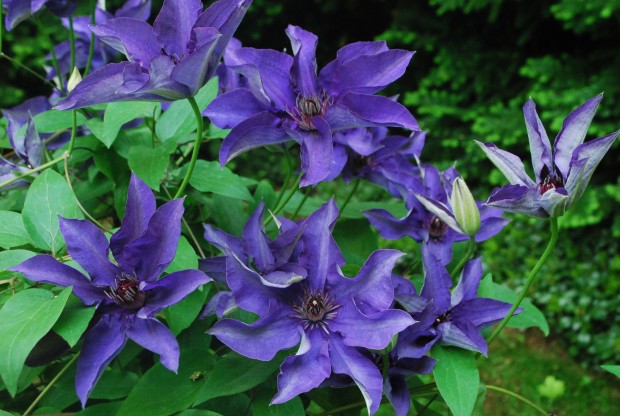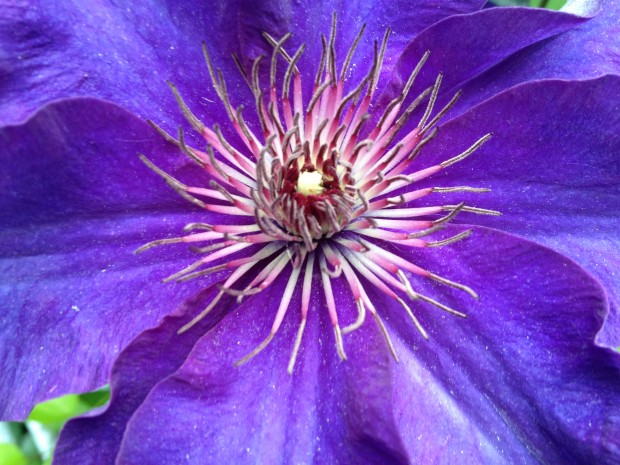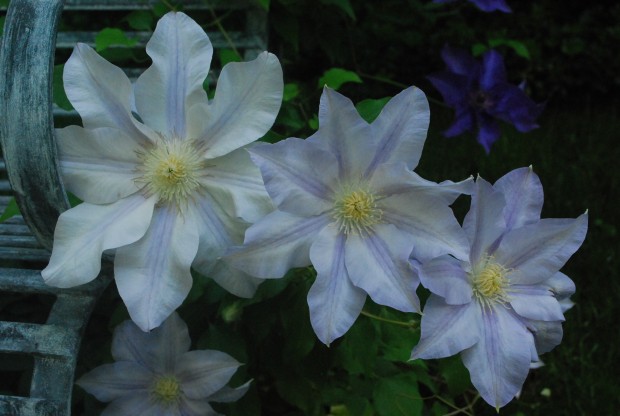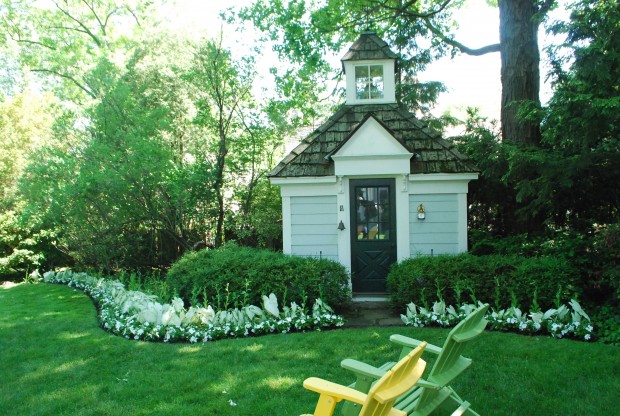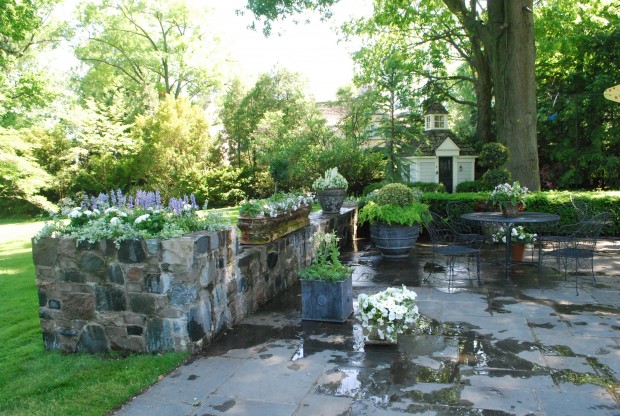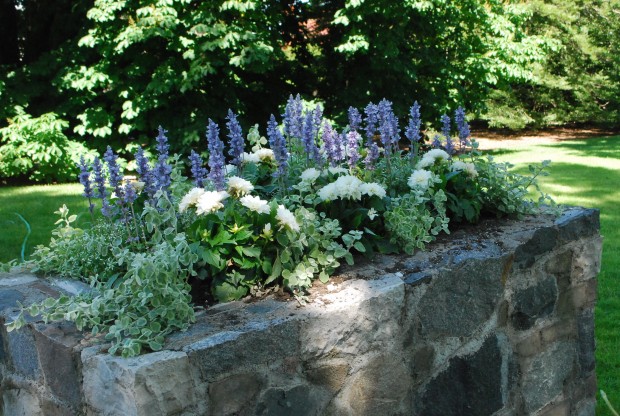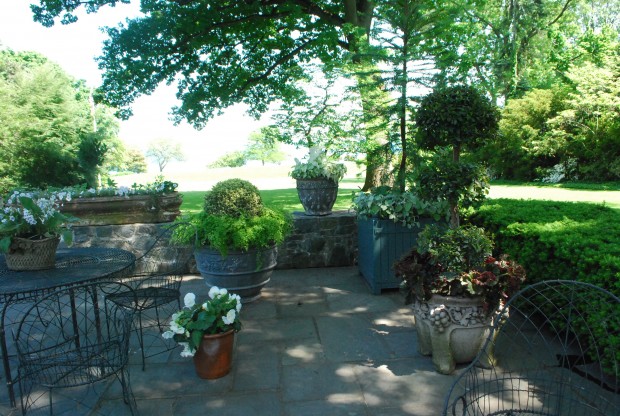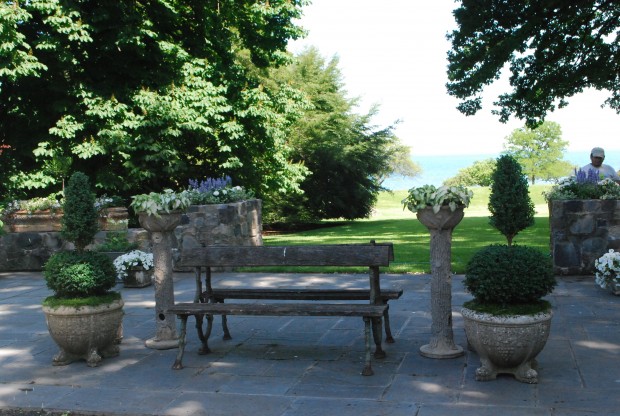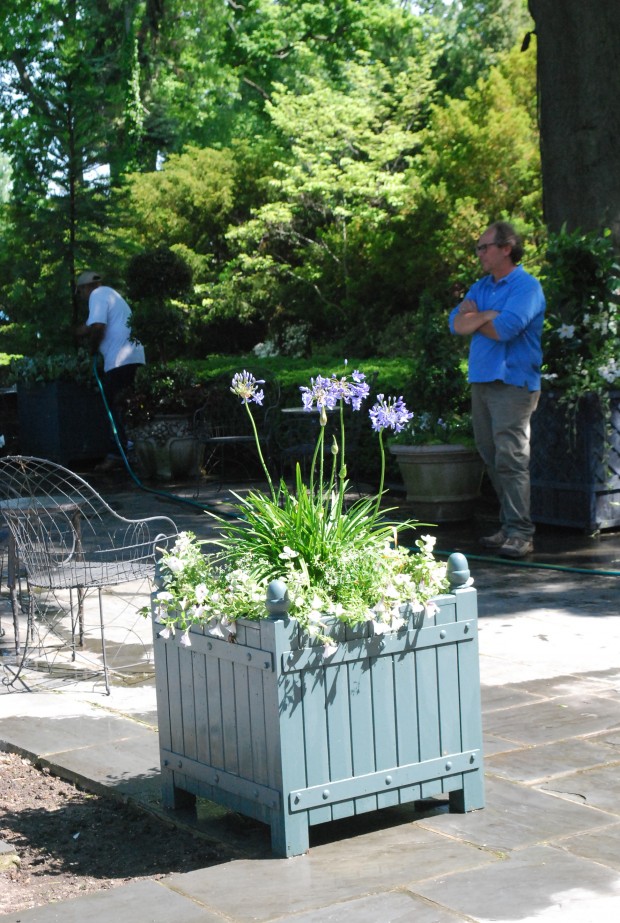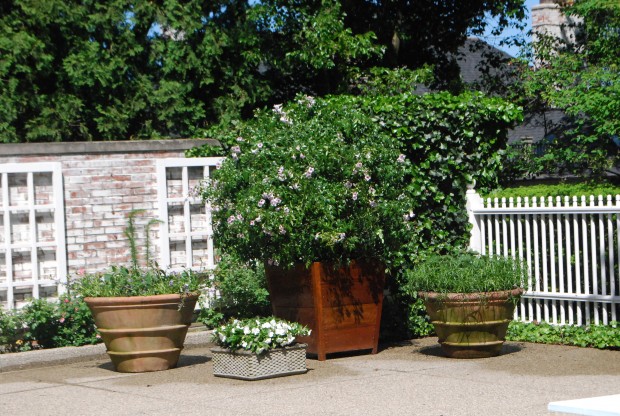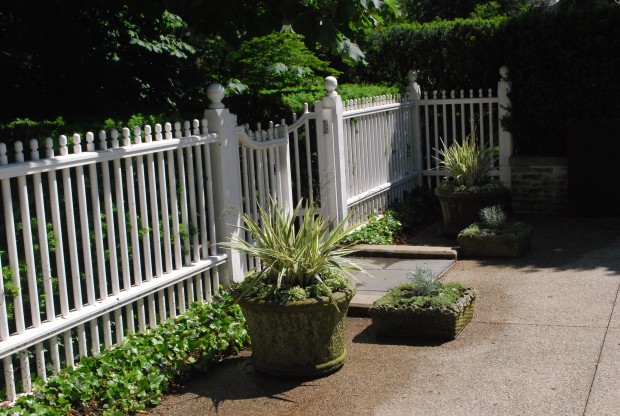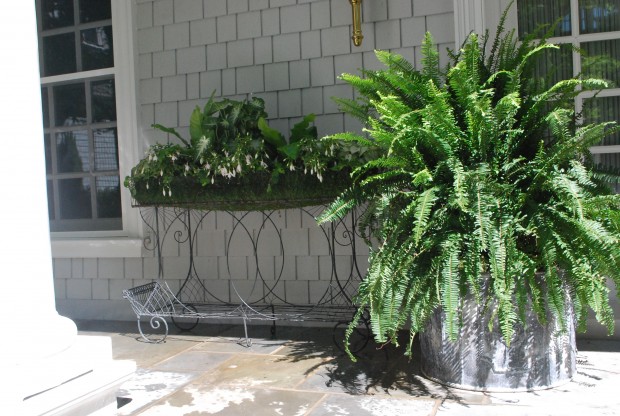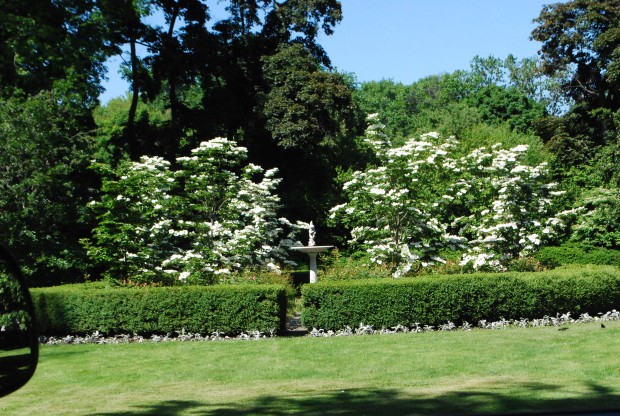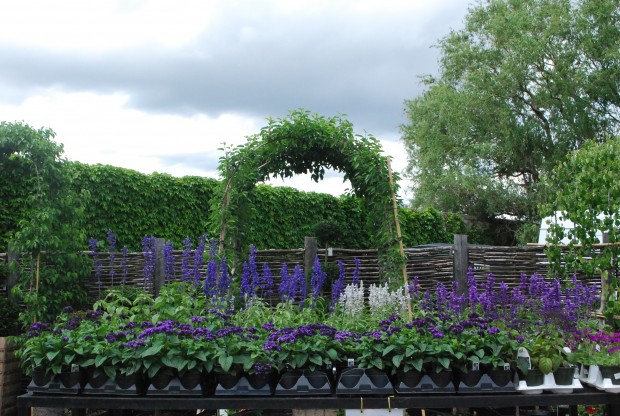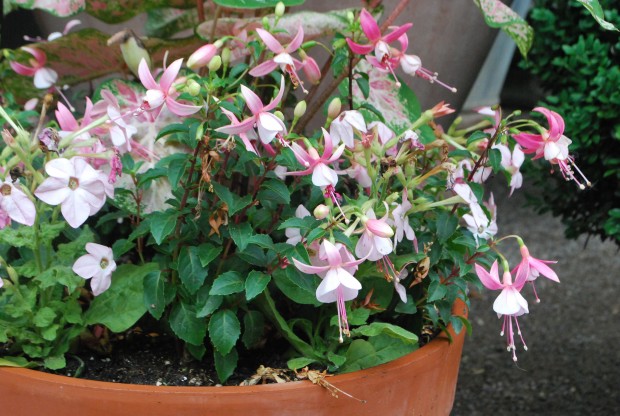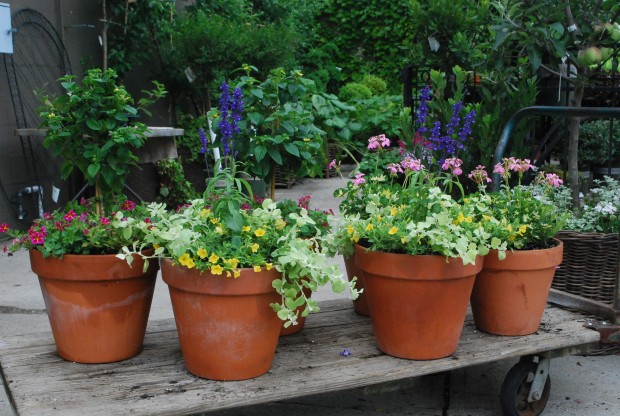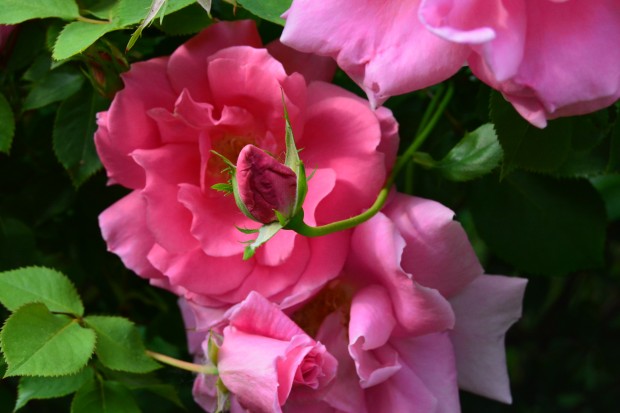 My landscape and garden occupies a lot and a half in a very urban setting. Pontiac, Michigan, to be exact. I do not have a villa in the south of France, or in Italy. I do not live in California, or England. I am the head gardener for a small property in the upper midwest. I live in a city. I can hear the motorcycles and the ambulances-and the music from the party next door. I am not complaining. I like where I live. I love my house. I treasure my garden. But that moment in early June when my modest patch of roses begin to bloom is a moment that I truly treasure. The roses coming into bloom is all about the romance of the garden.
My landscape and garden occupies a lot and a half in a very urban setting. Pontiac, Michigan, to be exact. I do not have a villa in the south of France, or in Italy. I do not live in California, or England. I am the head gardener for a small property in the upper midwest. I live in a city. I can hear the motorcycles and the ambulances-and the music from the party next door. I am not complaining. I like where I live. I love my house. I treasure my garden. But that moment in early June when my modest patch of roses begin to bloom is a moment that I truly treasure. The roses coming into bloom is all about the romance of the garden.
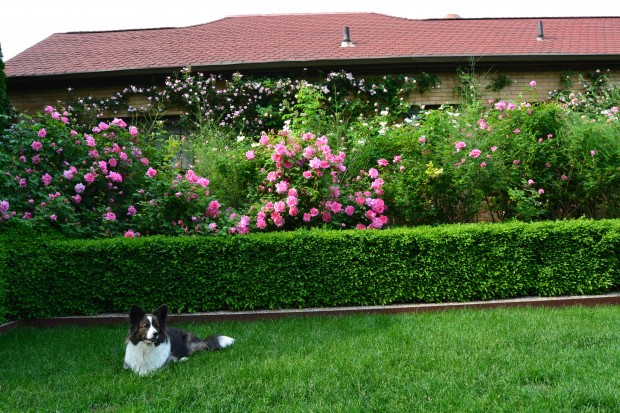 Most of my landscape is primarily confined to five plants. Yews. boxwoods, arborvitae, magnolias-and lawn. This is a landscape that that I am able to properly keep up. This is a landscape that is friendly to my dogs. It is a landscape about order and structure. My wild cards are few-by this I mean, manageable. I cannot come home to chaos. I need healthy, first and foremost. I need tended, secondarily. Thirdly, I need beauty. My work life is such that I want peace, quiet, and delight when I go home. But I have a few places for perennials. Perennials-loads of work. I have one small patch over which I am willing to fret weekly. But then, there are the roses.
Most of my landscape is primarily confined to five plants. Yews. boxwoods, arborvitae, magnolias-and lawn. This is a landscape that that I am able to properly keep up. This is a landscape that is friendly to my dogs. It is a landscape about order and structure. My wild cards are few-by this I mean, manageable. I cannot come home to chaos. I need healthy, first and foremost. I need tended, secondarily. Thirdly, I need beauty. My work life is such that I want peace, quiet, and delight when I go home. But I have a few places for perennials. Perennials-loads of work. I have one small patch over which I am willing to fret weekly. But then, there are the roses.
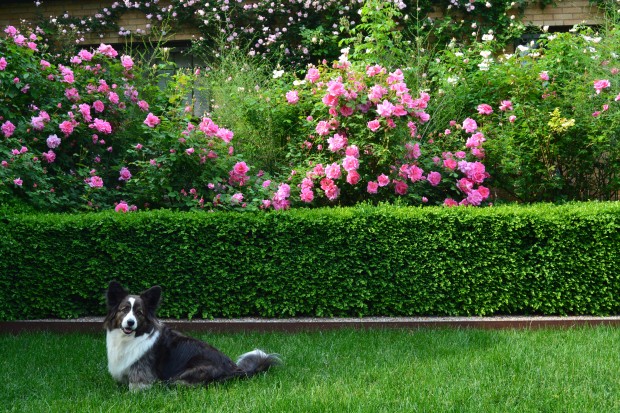 No other plant speaks to the romance of the garden in the way that roses do. The blooms are beautiful, and fragrant. When they are happy, they bloom profusely. So many florists get instructions to send roses to a loved one for a birthday, for Mother’s Day, for Valentine’s day- and for good reason. The rose speaks to romance. My corgis know what it means when I say-let’s go see the roses. They race around to the rose garden. When Buck brings home roses for me, I am a very happy girlfriend. Even Buck is enjoying the the June garden moment that celebrates the roses. The climbing roses-the miniature Jeannie LeJoie and the climber Eden. The shrub roses-Carefree Beauty, and Sally Holmes.
No other plant speaks to the romance of the garden in the way that roses do. The blooms are beautiful, and fragrant. When they are happy, they bloom profusely. So many florists get instructions to send roses to a loved one for a birthday, for Mother’s Day, for Valentine’s day- and for good reason. The rose speaks to romance. My corgis know what it means when I say-let’s go see the roses. They race around to the rose garden. When Buck brings home roses for me, I am a very happy girlfriend. Even Buck is enjoying the the June garden moment that celebrates the roses. The climbing roses-the miniature Jeannie LeJoie and the climber Eden. The shrub roses-Carefree Beauty, and Sally Holmes.
 This small rose garden has a lot to say right now. I feel no need to expound on which roses are good, and which roses are bad. There are lots and lots of roses to choose from. The David Austin shrub roses. The knockout roses. The species roses. The tea roses. The grandifloras. The tree roses. Blanc Double de Coubert-the fragrance is astonishing. Try some. Try any of them that appeal to you. If they fail, figure out why. No garden should be without a patch of roses. No plant endows a garden with more romance than a rose.
This small rose garden has a lot to say right now. I feel no need to expound on which roses are good, and which roses are bad. There are lots and lots of roses to choose from. The David Austin shrub roses. The knockout roses. The species roses. The tea roses. The grandifloras. The tree roses. Blanc Double de Coubert-the fragrance is astonishing. Try some. Try any of them that appeal to you. If they fail, figure out why. No garden should be without a patch of roses. No plant endows a garden with more romance than a rose.
Why is the romance so important? Romance has everything to do with what it means to be a person. Relationships make the world go round- this includes garden relationships. Any expression of love is an expression well worth making. Anyone who gardens expends a lot of thought, time and money to making a natural environment that is beautiful. Tell me if you think there is anything more romantically beautiful than a rose in bloom. My advice? Plant a few roses.
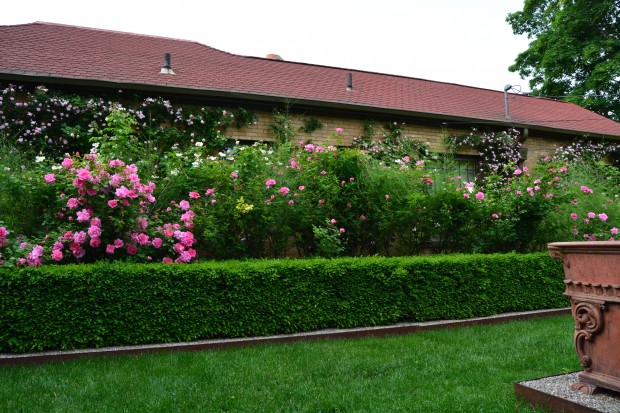 My work life right now is busy-as in urgent. Every day, all day long, I am working. But every day I go home, and Buck and I eventually meet in the rose garden. It is a fitting end to the day. The view of the roses in bloom-beautiful.
My work life right now is busy-as in urgent. Every day, all day long, I am working. But every day I go home, and Buck and I eventually meet in the rose garden. It is a fitting end to the day. The view of the roses in bloom-beautiful.
 As much as I design with structure in mind, I value those plants that tease, breathe, and enchant. Roses are the Sarah Bernhardt’s of the garden. Demanding? oh yes. Were I to fall in line behind the demands of any plant, roses would rank high on my list. Rob and Meg came for dinner night before last. They went round to see the roses. Rob is right. No plant speaks to romance better than a rose.
As much as I design with structure in mind, I value those plants that tease, breathe, and enchant. Roses are the Sarah Bernhardt’s of the garden. Demanding? oh yes. Were I to fall in line behind the demands of any plant, roses would rank high on my list. Rob and Meg came for dinner night before last. They went round to see the roses. Rob is right. No plant speaks to romance better than a rose.
 My working life is not perfectly organized. The cold and rainy April, and the late frosts have put me way behind. I have lots of annual plantings ahead of me-10 days worth-at least. Every season is what it is. Last night I went to bed at 7:30, and slept until 6:30 am. Coming home to the roses representing-delightful.
My working life is not perfectly organized. The cold and rainy April, and the late frosts have put me way behind. I have lots of annual plantings ahead of me-10 days worth-at least. Every season is what it is. Last night I went to bed at 7:30, and slept until 6:30 am. Coming home to the roses representing-delightful.
 Carefree Beauty-this is a shrub rose that was hybridized by Griffith Buck. I love the big blowsy pink blooms. I like its hardiness. Its disease resistance. I especially appreciate that fresh scent I know as June roses in bloom.
Carefree Beauty-this is a shrub rose that was hybridized by Griffith Buck. I love the big blowsy pink blooms. I like its hardiness. Its disease resistance. I especially appreciate that fresh scent I know as June roses in bloom.
 The corgis may not be tall enough to really have a good view of the roses. But they understand about moments. Every night, they get to that rose garden ahead of Buck and I.
The corgis may not be tall enough to really have a good view of the roses. But they understand about moments. Every night, they get to that rose garden ahead of Buck and I.
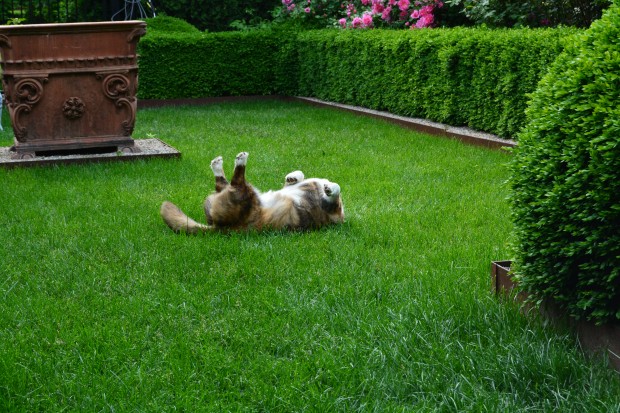 Two dogs and two people-we end the day in the company of the roses. My very small rose garden figures in a very big way in my life. I don’t mind the effort it takes to cultivate roses. In my opinion, a garden needs to evoke romance.
Two dogs and two people-we end the day in the company of the roses. My very small rose garden figures in a very big way in my life. I don’t mind the effort it takes to cultivate roses. In my opinion, a garden needs to evoke romance.
